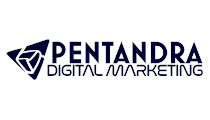Source: HOW TO WRITE A SPONSORSHIP LETTER THAT WORKS (WITH SAMPLES AND TEMPLATES, Chris Baylis is the President and CEO of The Sponsorship Collective and a self-confessed sponsorship geek. 2022.
https://sponsorshipcollective.com/how-to-write-a-sponsorship-letter/
The basic components of a sponsorship letter are as follows:
- An Introduction to Yourself and Your Opportunity
- The Reason You Got in Touch
- Information about Your Audience
- Your Activation and Sponsorship Opportunities
- A Mention of When You Will Follow Up
Keep reading to learn more about each section and how to use a sponsorship letter to get meetings with your prospects.
If the goal of the sponsorship request letter is not to make the sale, then what is the goal? Simply put, it’s to get the attention of your prospect and to get them to take your call or agree to a meeting. How do you do that? By being crystal clear on your opportunity and your audience. Here is a guideline to follow when creating your own sponsorship letter.
An Introduction to Yourself and Your Opportunity
This is not the time to include a long-winded, multi-paragraph description of your mission, vision, history, and how much money you need to make budget or accomplish your goals. Instead, briefly describe who you are with a sentence or two about your organization. Less is more here.
The Reason You Got in Touch
Why did you reach out to this sponsor in particular? For money, right? Wrong! Tell them why you got in touch with them!
The key word here is “them.” Why did you choose their company in particular? Do you know someone who suggested that you connect? This is the place to mention your mutual contact’s name and why they thought the two of you should meet.
What is it about the potential sponsor’s corporate goals that line up with yours? Do they have a history of sponsoring opportunities like yours? Do you offer access to an audience they’ve indicated is important to them? Is the main contact involved in organizations like yours?
This is where you show them you’ve done your homework and that they are not just one of thousands of letters you are firing out the door.
Information about Your Audience
This is your opportunity to stand out! Sponsorship is all about marketing and sales, and both require a target customer to work. Do you know your prospect’s target customer? Here is where you prove it.
I’m not talking about basic demographic information here or sweeping generalizations like “middle-class families.” I’m referring to data that describes who your audience is, why they are involved with your organization, the types of purchases they plan to make, and data related specifically to your prospect.
Do they buy your prospect’s product already? Can you help your prospect sell more product or keep current customers?
Most sponsorship seekers leave audience data out completely, hoping their prospects will be impressed by their cause or by the prestige of their brand alone. Yet without audience data, you look just like every other proposal that lands on their desk.
Not sure who your audience is? Check out this blog post all about audience data and sponsorship.
Your Activation Opportunities
Need a refresher on activation? Check out this blog post on building activation ideas that work. Craving some inspiration to build up some cool activation ideas? Here are eight activation ideas to get those creative juices flowing!
Instead of focusing on how much money you want from your sponsor, use your sponsorship letter to show your prospect that you understand how sponsorship works. Give them three examples of activation ideas that your sponsors and your audience love.
Show them the types of outcomes you can offer them, like branding, sampling, product placements, or contests. Be specific and clear about the way you work with sponsors and how sponsors can add value to your audience (who is also their target customer).
A Mention of When You Will Follow Up
Let your prospect know you plan to follow up and be specific on when. Tell them you are going to call them on a certain date and time or that you plan to stop by their office on a specific date to say hi. At that time, you can clue them in that you would love to learn more about their goals and how you can work together.
When you tell your prospect you plan to follow up, you are showing them you’re serious about working together. Then add your contact information and invite them to get in touch if the above times don’t suit them.
Faced with an impending meeting with a sponsorship seeker, more often than not, your sponsors will follow up with you first. It may be to tell you “no thanks,” or it could be to learn more about your audience and the cool activation ideas you featured in your letter. Either way, a yes or no is better than silence, requiring you to follow up forever.
When Not to Send a Sponsorship Letter
Your sponsorship letter is all written and polished using the information presented so far in this guide. Before you slap that stamp on, hold up! There are some instances where a sponsorship letter might not even be warranted.
Here’s an overview.
You Have No Prior Connection with the Sponsor
If you think your business or nonprofit is the only one to seek sponsorship, think again. Thousands upon thousands of your competitors will do the same. Maybe they won’t target the same sponsor, but the story doesn’t change all that much.
Any company known for its sponsorship will be bombarded constantly with a pile of letters and endless emails. You have to set yourself apart immediately or your letter will end up in the trash, be that the physical can or the digital one.
That’s why it’s good to have a connection, as I talked about in the last section. By at least wedging your foot in the door through someone who knows the sponsor, your potential sponsor may be more willing to communicate with you. Without that, you’re just another in that endless pile, ignored or trashed completely.
You Forgot Audience Data
It’s best to choose a sponsor to work with in which there’s some overlap, be that similar goals or a like audience. You may know your audience exceptionally well, but the sponsor has no way of gleaning the same info if you leave out audience data.
I seriously can’t stress the importance of this enough. Please take the time to compile your audience data and include it as part of your letter, even if there’s only a brief mention. Otherwise, your letter is not likely to get a second look from the sponsor.
The Timeline Is Too Tight
If your event is next week, then you might as well forget trying to get sponsorship at that point. By the time your letter even reaches the sponsor, it’ll be too late. They could want to help but would be unable.
Sure, the sponsor could want to work with you if you can plan better next time, but your lack of organization can also leave a bad taste in their mouth. You may then miss out on a potentially good opportunity just for your poor planning.



